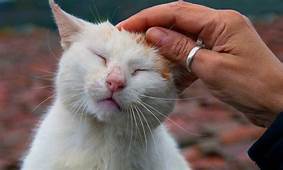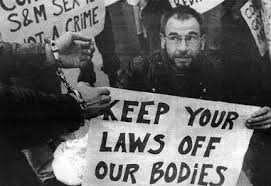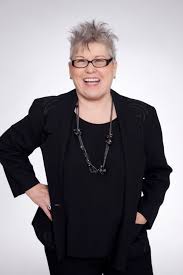
“…so loving to my mother that he might not beteem the winds of heaven visit her face too roughly.”
Hamlet, Act I, scene 2 — William Shakespeare
“Oh, my love, my darling
I’ve hungered for your touch…”
Unchained Melody — Hy Zaret and Alex North
The Power of Touch: A casual perusal of Western mythology suggests that it is scarcely possible to overestimate the power of touch. Sleeping Beauty is entirely overcome by a mere pin prick and awakened by a single kiss. A frog is transformed back into a prince by, again, a single kiss. Smeagol is embarked upon the loathsome transformation into Gollum by unknowingly grasping the One Ring of Power. Sophie is doomed by the wrenching loss of her son to the Nazi perpetrators of the Holocaust as he is torn violently from her grasp. There is no shortage of tales about the transformative power of touch, for good or for ill in our culture.

The power of touch domesticated horses, dogs and cats. It undergirds the power of healing to so great a degree that many religions including Christianity have powerful stories of healing by touch alone. These are not restricted to the revival tent, Freud and Breuer, having initially discovered resistance, experimented with overcoming it by laying hands on their hysterical patients, pressing their foreheads in a naive attempt to overcome it. Amidst our recognition of its power, Masters and Johnson formulated behavioral therapy for sexual problems that emphasized the power of pleasurable touch to change behavior. We are regularly learning of the role of neurotransmitters and hormones that are triggered by touch, and our professional and criminal regulations struggle to delineate the boundaries between professional and therapeutic touch and abusive behavior. National scandals around it are a daily occurrence in the news media, from the American women’s gymnastics scandal to the chronic crises of sexual exploitation that enmire the Roman Catholic Church internationally, to stories of politicians at the highest level who sexually exploit interns in the Oval Office or brag on national TV that their power can coerce acquiescence, if not consent, from beauty pageant contestants by touch alone.

The Need for Legitimacy: Our friends at AASECT then, can be forgiven for a certain apprehension about the power of educational touch in their educational programs. Striving to define their sexual health practitioners amidst the power and danger of touch and desire is a daunting task. Striving for legitimacy, sex educators, counselors and therapists know that legitimacy is hard to sustain in stigmatized sexual discourse. In an age where public perceptions of a thing often trump established scientific facts, legitimacy is evanescent and always under challenge. One need only examine the titles of AASECT Annual Conferences to see how difficult this is. Although sexuality is strongly associated with pleasure, AASECT commonly goes for 7-8 years at a time before frustrated activists put ‘pleasure’ in the title. For an enlightening comparison, look at how long it has been since their conference title included the word ‘touch.’ For the curious, AASECT has used “pleasure” twice and “sensuality” once in the 25 years over which I have records. It has used touch zero times.

Guilding Politics and Protection of the Public: Partly this is a consequence of the guilding politics of AASECT. AASECT was founded in 1967, as an organization of sexuality educators. In 1973, they made the controversial decision to welcome sex therapists into their community. In order to bolster their professional legitimacy, sex therapists require that candidates for sex therapy certification attain licensure as professional mental health practitioners before they began training as certified sex therapists. Because of the dangers of unprofessional sexual conduct between mental health practitioners and their vulnerable clients, touch between therapists and patients is strictly limited by State licensing bodies. Surveys indicate that about 8% of clients have had unprofessional touch from mental health professionals up to and including sexual assault, with male therapists about three times more likely than female therapists to have admitted sexual contact with a client. In this climate, it is unsafe for the professions or the public to fundamentally relax these professional boundaries even in the face of evidence in that touch can be therapeutic. Thus, AASECT Certified Sexuality Educators have become bound by the legitimacy needs of sex therapists whether they made specific sense in many educational contexts.
The awkwardness of this position has become increasingly evident over time as AASECT has established a reputation for providing high quality sexuality training in a larger society where such resources are relatively scarce. A great many people attend AASECT events for this training that do not anticipate being able to benefit from AASECT certification or nor benefit from mental health licenses. Sexual surrogates need sexuality training to work effectively with sex therapists as originally intended in protocols worked out by Masters and Johnson. Although such auxiliary treatment is regarded as illegal sex work in many states, it is permitted in others, and AASECT does not certify surrogacy training, although it occasionally provides courses about working with sex surrogates. Sex workers, massage therapists, tantra instructors, lifestyle educators, sex toy makers and marketers, and other sexuality professionals benefit from sound instruction on human sexuality and AASECT has not only historically been a good place to get it, but these other professionals enrich the diversity of discourse about human sexuality through their participation in AASECT. But their participation in AASECT’s community also poses concerns about service, power, and equity. AASECT’s mission is to educate the general public about human sexuality, but to specifically service the interests of its certified professionals who comprise most of its membership and vote on AASECT’s Directors. Certified Sex Therapists make up 80% of AASECTs certified professionals, and it is their interests that are most reflected in the actions of the AASECT Board of Directors. Certified Members stay affiliated with AASECT longer and more of them vote in AASECT elections.
Professional Marginalization of Touch: AASECT’s Code of Ethical Conduct is often the fulcrum of conflict about the differing needs and sensibilities of the various populations served by AASECT. The code applies to all AASECT certified professions and is assumed to be aspirational for all AASECT trainees. It enshrines boundaries appropriate for psychotherapists despite the fact that these are all subject to the aforementioned strict state licensing authorities, and educators are often practicing in contexts where they have lesser power over their clients and less need for strict boundaries. This is even more true for allied sexuality professionals or sex workers whose work routinely uses touch. One of the functions of AASECT’s boundary, whether intended or not, is to marginalize these other activities. Often, it is specifically intended to do just that.
During the past administration, and on the advice of the attorney provided AASECT by Bostrom, AASECT’s professional management company, the Board of Directors has approved an extension of this policy so as to ban AASECT Continuing Education Credits (CEs) for any experiential programs involving educational touch. This is not part of the AASECT Code of Ethical Conduct but does govern what programs AASECT will mount itself or approve by AASECT approved CE providers. It constitutes an aggressive change to protect AASECT from any adverse consequences of any such programs which might create legal liability for AASECT. AASECT seems to have had advice from this attorney that the only way AASECT can be fully protected from such potential liability is a total ban on all CE for such programs. That advice, as far as it goes, is probably technically correct. Certifying sexuality professionals carries some risk, certifying educational programs carries additional risk and the task of differentiating good programs involving touch from bad ones carries more risk. In a stigmatized environment, any educational program caries some risk, and minimizing liability is a directorial responsibility. Note also that Bostrom, which manages no other sexuality organizations, has no special interest in AASECT engaging in risks that might interfere with its ability to buy Bostrom’s liability. From the point of view of Bostrom and their attorney, there is no advantage in carrying the risks of certifying programs that employ educational touch.
If, as I have claimed, protecting CE for quality touch programs is a necessary part of AASECT’s business model, it is AASECT’s responsibility to use legal advice to protect such programs, not abandon CE for them. I am not an attorney, but I seriously doubt that, should a mishap occur at an AASECT activity where AASECT approved the program and recruited the demonstrators, the fact that CE was not approved would significantly improve AASECT’s legal protection from possible damages. It is quite possible to be a responsible director and doubt the protective value of this recommended policy.
AASECT’s History of Educational Programing: Previously, AASECT had approved on a case by case basis a very narrow handful of programs that would violate this recent ban on CEs for educational touch. These were among the most popular and successful AASECT programs ever conducted, including a live clinical demonstration of a gynecological exam in 2006 in St Louis, and two Taste of Kink programs in Minneapolis in 2016 and Denver in 2018. (An important point of self-disclosure here: my colleague Susan Wright and I are the designers of record for those Taste of Kink programs which were mounted in cooperation with the AASECT AltSex Special Interest Group and demonstration teams recruited by the National Coalition for Sexual Freedom which Susan chaired. I have served on the NCSF Board since 2018.) Occasional programs on tantra, spirituality, and other topics included limited touch. All of these events that provided for consensual educational touch were optional sources of CEs, not mandatory for certification, but providing full credit towards it if trainees elected them.
The most prominent experiential component of AASECT training is SARs, Sexual Attitude Reassessment programs that are a required component of all AASECT certifications. They do not involve touch but do require participants to view and discuss a wide variety of sexuality topics include porn, sexual variability, coercive sexuality, gender expression, HIV, loss and stigma that are highly stressful for some participants. Supervised group discussions provide stressed participants some support for dealing with their feelings about stressful material but also pressure to discuss it. I describe this feature of the program here as context for later criticisms about optional CE programs that might involve touch as potentially too stressful for AASECT trainees. AASECT is aware that practice of its professions in a sex negative culture is stressful, and that trainees come to AASECT in highly variable states of self-knowledge, self-acceptance, and tolerance for different sexual content.

Why AASECT is the Certifying Body for Sexuality Training Programs: Why little AASECT with less than 3000 members and annual conferences of about 700 participants is brokering conversations about what constitutes credit worthy sexuality instruction is a consequence of much more powerful social institutions having abrogated their responsibility to undertake this task. First on this list of non-joiners are most American academic institutions. There are fewer sexuality degree programs in the US than in Canada which has less than one eighth our population, and many of the best US programs including Widener University and The University of Michigan School of Social Work’s Sexual Health Certificate Program train explicitly to standards developed by AASECT. Second on the list are the mental health professional associations such as the American Psychiatric Association, American Psychological Association, and National Association of Social Workers all of whom train and talk about sexuality but have declined to set standards or even mount internal organizations to support systematic teaching and discussion of sexuality. The American Psychological Association, for example, has 56 divisions including a division for men’s studies, one for women’s studies, and another for sexual orientation and gender diversity, but not one for human sexuality. Organizations that explicitly train and certify competence to treat sex ‘addiction’ (International Institute for Trauma and Addiction Professionals, IITAP and Society for the Advancement of Sexual Health, SASH) and marital and relationship problems lack any human sexuality training requirements whatsoever. Similar circumstances propelled Patricia Schiller JD, an SEC lawyer (that’s right, the United States Securities Exchange Commission, the outfit that regulates trading in stocks and bonds) to found AASECT over 50 years ago and these conditions persist to this day. Like it or not, AASECT is in a position of relative power and authority to control what constitutes effective instruction in the fields of sexuality education, sexuality counseling, sex therapy, and the supervision of those disciplines, and AASECT’s actions dominate the professional ethics under which those professions are conducted.
The Core Criticism of AASECT’s Educational Touch Policy: Up to this point one might imagine that I am primarily sympathetic to AASECT’s plight in this educational touch decision, and I am sympathetic with AASECT’s dilemma, but I am also one of AASECT’s most out and prominent critics of the decision to ban CE’s for programs including educational touch. Having worked hard over the last 15 years to expand the field of sex therapy to include the treatment of kinky clients in our clientele, I am necessarily opposed to any decision that would damage our credibility or effectiveness in treating them. This CE policy does that, and it does so unnecessarily. But my opposition is not just theoretical and clinical. I am in a leadership role in work with this community, and as a retired member and major donor to AASECT, I am free to take steps that other certified members could not for reasons of professional vulnerability. It is my responsibility as an ally of these clients to take this position and to refuse to support AASECT if it marginalizes some of its clients in an attempt to protect itself.
I maintain that AASECT’s first responsibility is to the clients of our certified members, and this properly belongs ahead of our collective self-interests, where those may diverge from those of our potential clients. In this, I am listening to Michel Foucault, who 40 years ago observed that the history of sex since the Enlightenment was primarily about the professional guilds licensing their right to discuss and treat sex rather than about effectively protecting the public. Somewhat prophetically, Foucault was among the first of the French intelligentsia to die in the HIV epidemic even as politicians opposed funding to combat this pandemic because AIDs should be viewed as God’s punishment for homosexual and recreational drug behaviors. AASECT is not deliberately trying to harm kinky clients, tantra instructors, lifestyle educators and sex workers by banning CE’s for educational touch. But they are making a stigmatizing choice absent the slightest scientific evidence that fully accrediting these programs makes AASECT’s professionals’ clients or AASECT’s trainees more vulnerable to any social ills whatsoever.
The core of my argument is that risky and powerful as touch may be, touch is a core part of human sexuality and integral to our business. If AASECT does not effectively license and permit experiential training that involves touch, clients will be further exposed to underqualified professionals, a problem that has plagued the historical treatment by the well-meaning but self-interested mental health professions. For example, these professionals have only recently stopped categorically classifying a wide spectrum of diverse sexual interests and practices as prima facie evidence of psychopathology. That only stopped in 2013 with the publication of DSM – 5. Modern data shows that sexual variability is not in and of itself pathological.

But a look at the list of diverse practices certainly gives even the most casual observer pause that some kink activities include elevated risks relative to conventional and socially approved of sex practices. Coitus is rarely life threatening except through disease transmission, but choking, sexual asphyxia and bondage can be dangerous. BDSM practices often mimic violence and are often misunderstood as violence. And a very high degree of sexual violence is already readily tolerated in many cultures, especially intimate partner violence (IPV) and sexual assault. It is not automatically stigmatizing to negatively impact relatively safe kink practices in the effort to curb other prevalent dangerous practices. This was at the core of the infamous 1988 Operation Spanner Case in which the British equivalent of our Supreme Court eventually ruled that consent should not constitute a defense against criminal charges of assault lest victims of IPV, who routinely decline to prosecute their assailants, be deprived of the protection of criminal statutes. The narrow ruling may have been unfair to the tiny number of consenting gay sadomasochists in this Spanner case, but it would constitute a greater unfairness to the much greater number of IPV victims if their continuous consent was required to proceed with prosecutions designed to protect them. For the record, I completely understand the sexual freedom is not the ultimate value in all matters, and it must sometimes be subordinate to other goods.

That said, abdicating responsibility for approving quality CE experiences involving touch undermines the AASECT Vision of Sexual Health, suggests that such instruction is not valuable enough to defend, and surrenders leadership in the field that many historical figures as diverse as Bill Masters and Virginia Johnson and Betty Dodson, Beverly Whipple and John Money, Gina Ogden and David Schnarch and Peggy Kleinplatz have worked hard to establish. Some, like Dodson, were never AASECT Members, but tried hard to expand the field, explicitly used nudity and touch. When I came to the field, the bio-psycho-social model of sex therapy extolled by Helen Singer Kaplan was very influential, and bio was clearly understood to include touch and pleasure but that model broadened sex therapy by challenging that idea that behaviorism held all the important insights in understanding sexual expression,. While touch has always been important, its importance and how to teach about it have been subject to continual struggle and revision. The AASECT Code of Ethical Conduct was intended to be the bulwark that defended AASECT’s legitimacy while struggling to teach stigmatized content. This marks a great divergence in AASECT from organizations like APA. In the American Psychological Association, every member operated under boundary rules that the state licensing authorities have adopted under APA’s urging. All clinical practitioners operate under state regulations. And most struggles in APA are between their different practice environments of academic and clinical practitioners. So, contrary to incorrect reports from AASECT officials in trying to sell their CE ban for consensual touch, APA does not have any such ban. We at NCSF wrote to the APA and checked. The popular touch-based programs formerly held at AASECT were all accepted for APA CE credit. Academic psychologists do not need a touch ban for University training and the great diversity of therapy disciplines and practices already have licensing boundaries. AASECT officials erroneously tried to bolster the legitimacy of their proposed boundary because someone much more powerful than AASECT did it and our CE needs to be reciprocal with theirs. Although I’m not sure that reciprocity assumption might require some checking, after all, APA does not even require training in human sexuality in their own accreditation processes, APA has no ban. It is regrettable the official most responsible for CE with APA didn’t actually check to see that their claim was true.
© Russell J Stambaugh, PhD, Ann Arbor, Michigan, March 2020